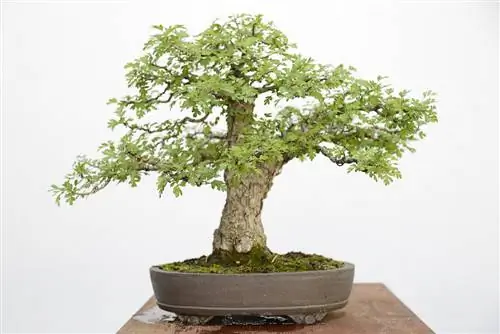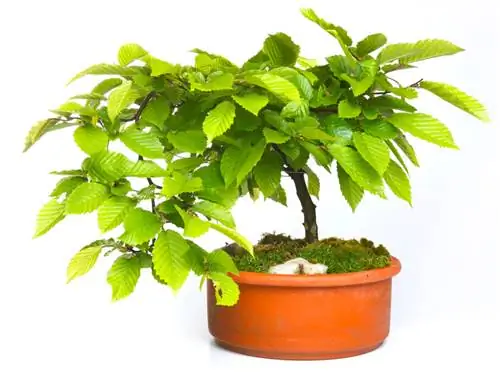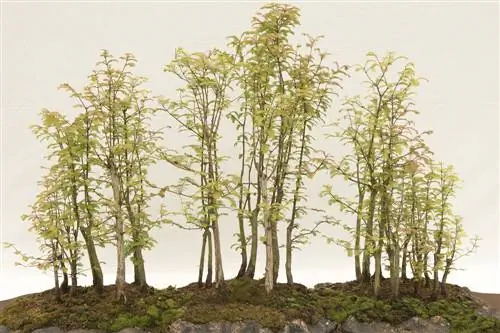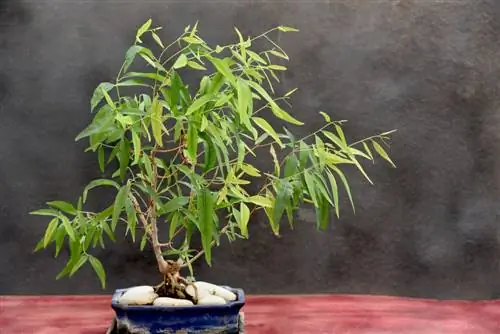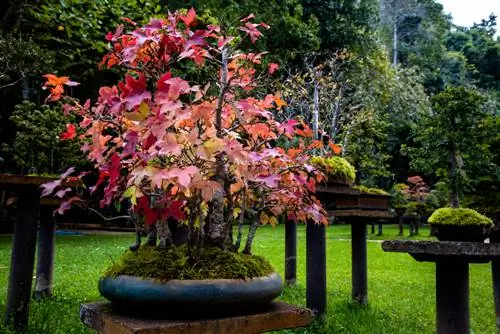- Author admin [email protected].
- Public 2023-12-16 16:46.
- Last modified 2025-01-23 11:22.
The common hawthorn is a native species that looks very similar to Crataegus cuneata, which comes from Japan. One difference lies in the color of the flowers, because the Central European wild species blooms white, while the Japanese hawthorn glows red.
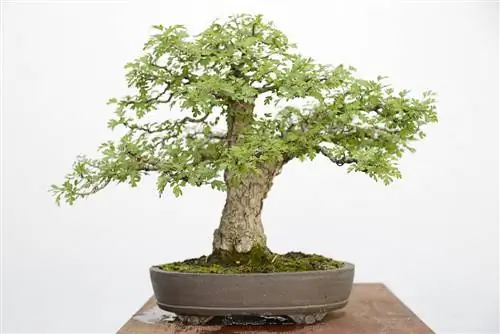
How to care for a hawthorn bonsai?
Hawthorn bonsai are characterized by vigorous growth and high vitality. To promote beautiful flowering, shoots should be pinched after flowering and cut in winter. Strong-growing branches can be tamed and shaped with aluminum wire.
Features
Crataegus monogyna is a widespread and popular species in the bonsai scene because this species is characterized by strong growth and high vitality. The basic structure is achieved quickly. Heckthorn quickly forms a strong base and strong branches, although the leaves are naturally rather small.
Beware of fungal diseases
The species is susceptible to infestation by hawthorn rust. This leads to the formation of deformed branches. In addition, powdery mildew causes a mealy coating on the leaves, which develop brown spots and wither. In such cases, you must generously cut off the affected parts of the plant and treat the entire tree with fungicides. Even if an infestation has been overcome, a relapse can occur every year.
Design options
The wood allows for numerous design styles, although strictly upright types or the broom shape are rather unusual. From upright designs to semi-cascades, rock formations or landscapes, the shrub can do a lot.
Promote flower formation
Promoting a beautiful bloom of flowers is not easy with hawthorn, because the tree invests more of its energy in the growth and development of long shoots. The flowers arise on the short shoots and dry out quickly if not cared for optimally. In this way, the flower volume decreases over the years. You can remedy this by tweezing after the flowering period. Prune the shoots of the strong branches so that the growth force is distributed to the weaker shoots. Make sure the branches are arranged alternately.
Cutting techniques
In winter the tree is in the dormant phase, so pruning is recommended. To ensure that the cuts heal more quickly, you should use scissors shortly before budding in March. Larger injuries take several years to heal completely. Creating tiers is no problem, as hawthorn develops abundant shoots directly on the trunk after intensive pruning.
How to proceed:
- Short long shoots from a length of 15 centimeters to two to three leaves
- Reduce the 10 centimeter long new growth in old specimens
- remove wilted flowers and cut branches back to one or two nodes
- remove disturbing and unnecessary shoots on the main trunk after they emerge
Tip
A little practice is required when determining the direction of growth, because the remaining buds do not always sprout reliably after a cut.
Wiring
The growth of strong branches can be slowed down by wires. Start using this method after bud break between May and June. Check the branches regularly and replace the wraps if necessary. Take off the aluminum wire completely next spring.

